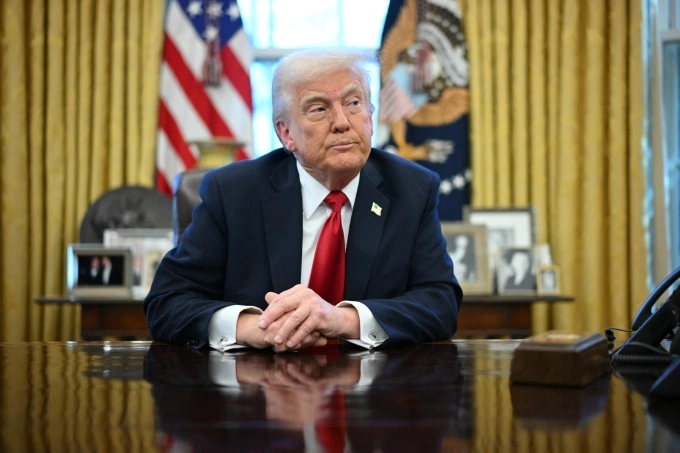
Markets Test Trump’s Policy Shifts
After announcing sweeping tariffs that shook global markets, President Trump quickly reversed course in response to sharp market downturns.
Since returning to the White House in January, President Donald Trump has aggressively pursued his campaign promises — streamlining the government, tightening immigration policies, imposing tariffs on both U.S. allies and rivals, and more.
Trump has been determined to push forward with his agenda despite legal challenges and intense debate. But so far, the only real obstacle to his ambitions appears to be Wall Street.
On April 2, Trump announced new tariffs on around 180 U.S. trading partners, including higher retaliatory duties on about 60 major partners set to take effect on April 9. Yet, within half a day of the tariffs taking effect, he abruptly suspended the measures for 90 days for all partners except China. The reversal came after sharp declines in U.S. stock markets and a major bond selloff triggered panic among investors.
In the days that followed, the U.S. and China escalated their tariff battle, sparking fears of a full-blown trade war that could rattle the global economy. Trump even threatened to fire Federal Reserve Chair Jerome Powell over dissatisfaction with the Fed’s policies. The mere suggestion caused another steep selloff on Wall Street on April 21.
Afterward, Trump softened his tone, suggesting that tariffs against China — initially set at 145% — could be lowered significantly if a trade agreement were reached, though he insisted the rate would never drop to zero. Trump also walked back his threat against Powell, saying he simply wanted the Fed to be more aggressive in cutting interest rates.
Markets responded positively. Stocks rebounded, the U.S. dollar strengthened, and gold prices fell as investor sentiment improved, according to Tina Teng, an analyst at Euronews.
Both Trump and White House officials emphasized that all moves were part of a long-term strategy to pressure partners into renegotiating trade agreements. They insisted the president remains committed to reshaping global trade to favor the U.S.
"The only guiding factor for President Trump’s decisions is the best interest of the American people," White House spokesman Kush Desai stated.
However, insiders reveal that Trump’s top aides, including Treasury Secretary Scott Bessent and Commerce Secretary Howard Lutnick, advised him that maintaining the hardline approach could further destabilize financial markets.
White House Chief of Staff Susie Wiles reportedly warned Trump that a market crash could erode his political base — a crucial support for future policy initiatives.
Following his announcement to delay tariffs on April 9, Trump admitted he was closely monitoring the markets, calling recent volatility "sad to see."
"You have to be flexible," he told reporters when asked about the credibility of his tariff threats. "When you look at the financial markets, they change — and you change with them."
Earlier this week, Trump also met with executives from major U.S. retailers including Target, Walmart, and Home Depot. They reportedly warned that tariffs could disrupt supply chains and drive up consumer prices.
Since Trump took office, the S&P 500 — a benchmark for U.S. equity performance — has fallen about 10%, the worst performance for any administration in its first 100 days, according to Dow Jones market data.
Analysts say Trump's recent policy shifts highlight a growing sensitivity to Wall Street movements and signals from trusted financial advisers.
Trump faces two sometimes conflicting goals: boosting stock market growth while revitalizing American manufacturing through tariffs. Balancing these competing aims has forced tactical shifts, observers note.
Both former and current Trump advisers confirm that the president pays close attention to market trends following every major policy move.
"He sees the markets as a barometer for what’s happening around him," said David Urban, a former political adviser to Trump. "In his mind, it reflects how people feel about life and the financial world."
(Sources: WSJ, Washington Post, Euronews)
Hello Shuttle will strive to bring the latest updates. At the end of the day.
Are you looking for reliable airport and cruise port transfer services in Los Angeles?
We offer professional, safe, and punctual transportation from
Los Angeles Airport - LAX
Long Beach Airport - LGB
John Wayne Airport - SNA
San Pedro cruise port
Long Beach cruise port
Disneyland
and other destinations.
Let us make your journey stress-free and comfortable with our dedicated drivers and high-quality vehicles. Book now for the perfect travel experience at www.helloshuttle.com or call 944-800-5678!


